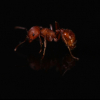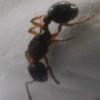Hey guys!
Recently, I have flipped over many rocks to look for colonies. However, I have only found workers with no queens or brood, iwht no access to burrowing soil. Where is the queen? I have also often seen colonies with brood, but no noticeable queen. While I am aware of satellite nests, these colonies seem too small to have one. Where is the queen?


















